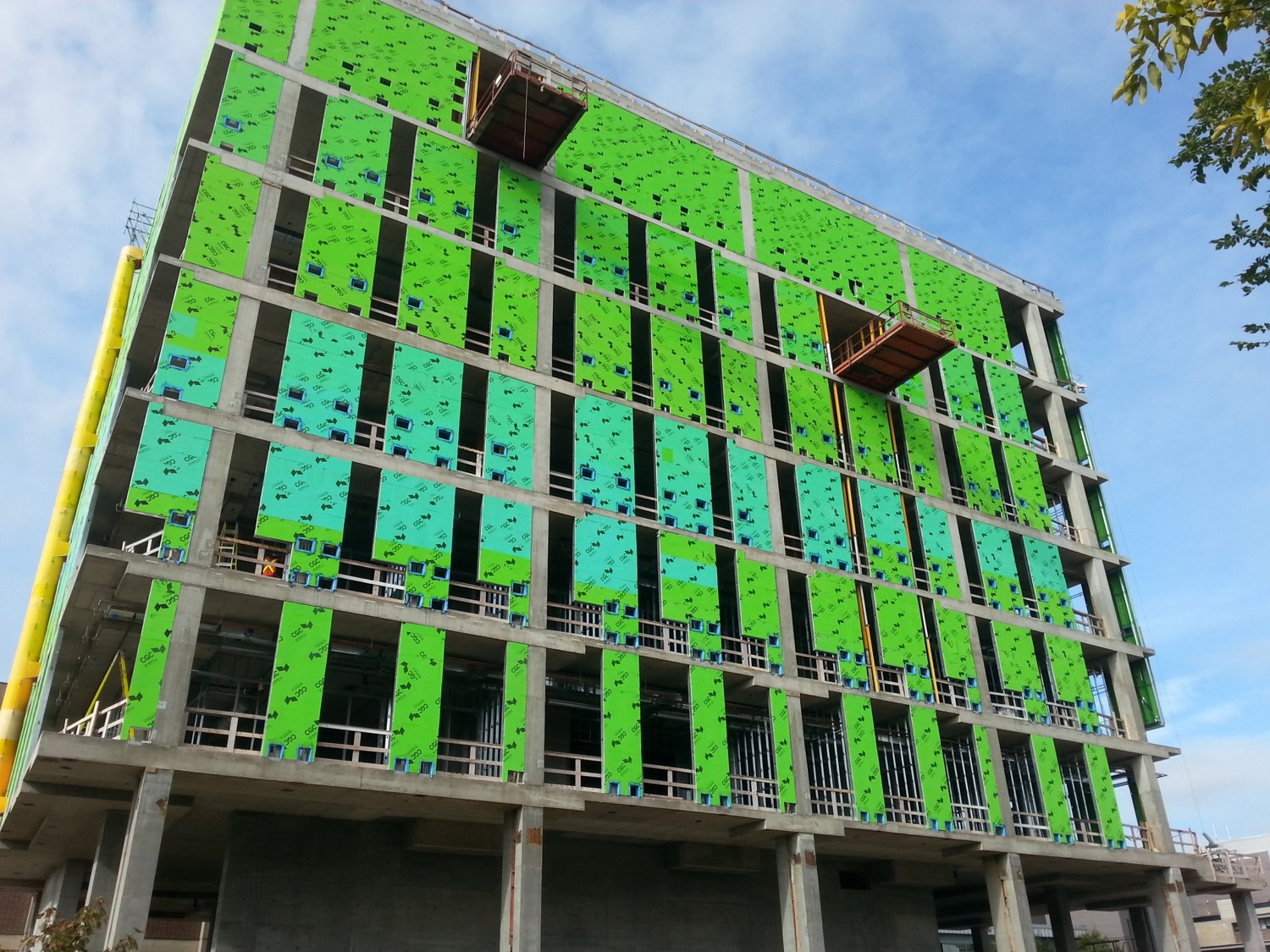Most offices are currently controlled incredibly inefficiently because the controls are rigid and conservative; they normally treat all occupants as equals and do not reflect specific thermal and visual properties of the space. To address this, we are developing advanced controls that adapt to occupants and spaces in order to both improve comfort and reduce energy use. Our controls actively learn occupant preferences (e.g., lighting conditions), arrival and departure time, and thermal characteristics of their offices. This information is all used to update the controls in each office controller in real-time. For instance, if one professor tends to arrival at 11AM every Monday, our controllers will stop heating or cooling their office until shortly before they arrive. The amount of time required to warm up or cool down their space depends on how much thermally massive furniture and books they have in the space – this is all accounted for.
The Delta Controls Lab, one or our main facilities, is a room that is “off the grid” from the rest of the Canal Building controls. As a result, we have incredible flexibility to test new controls schemes without risking the comfort of all occupants in the building! Our latest building that we have control over is the Health Sciences Building.
In close collaboration with Delta Controls, Regulvar, and Facilities Management and Planning, we are implementing our controls into numerous Carleton private offices. Our ultimate goal is to develop a marketable product that gains widespread market penetration.
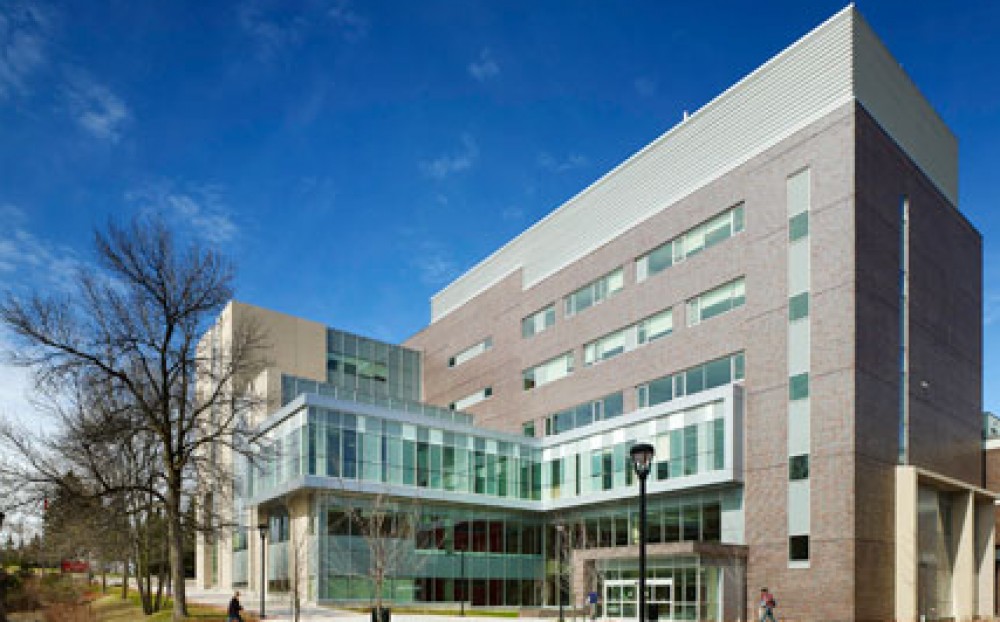
Canal Building
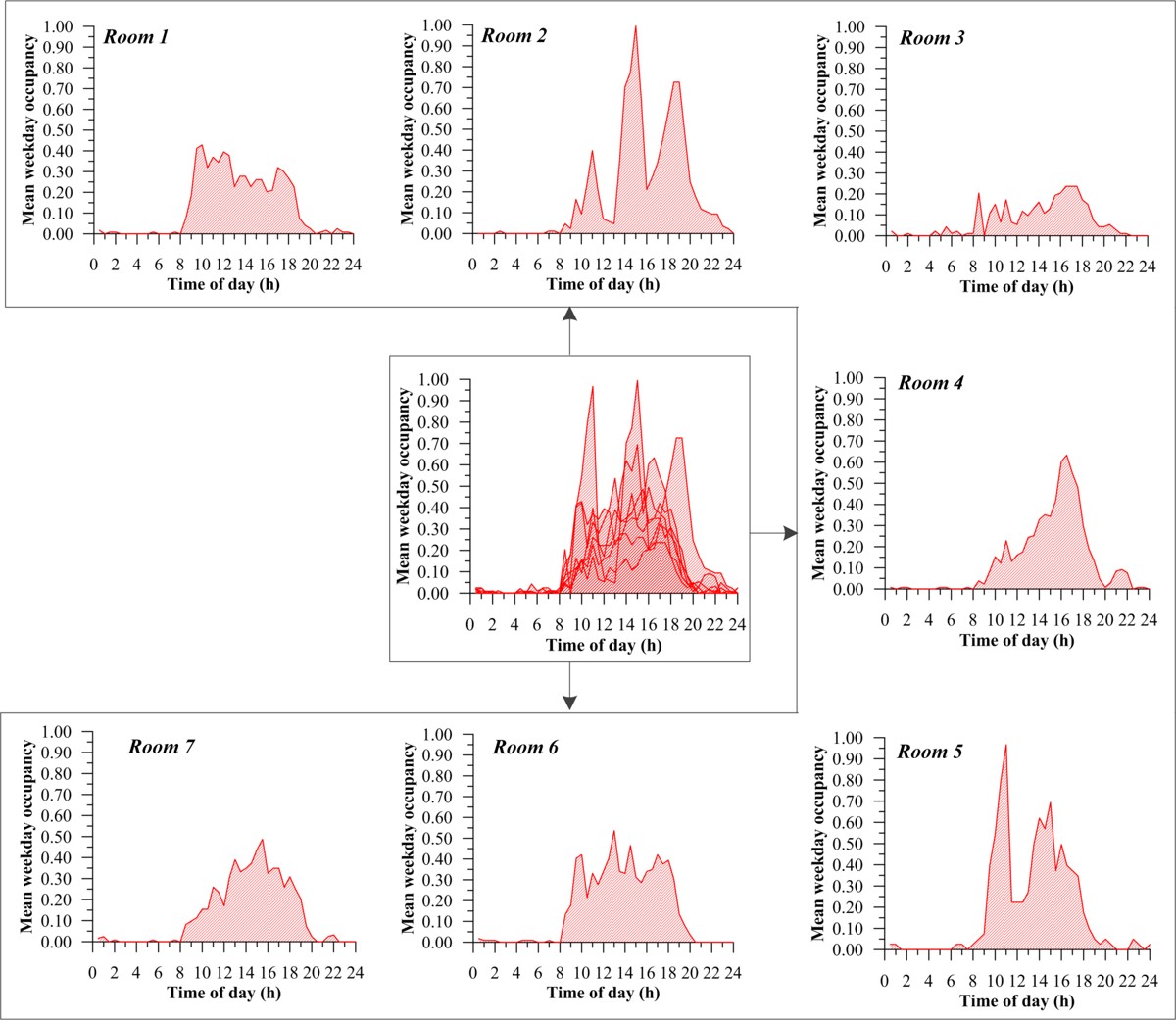
Schedules of 7 occupants of private offices (based on a year of monitored data)
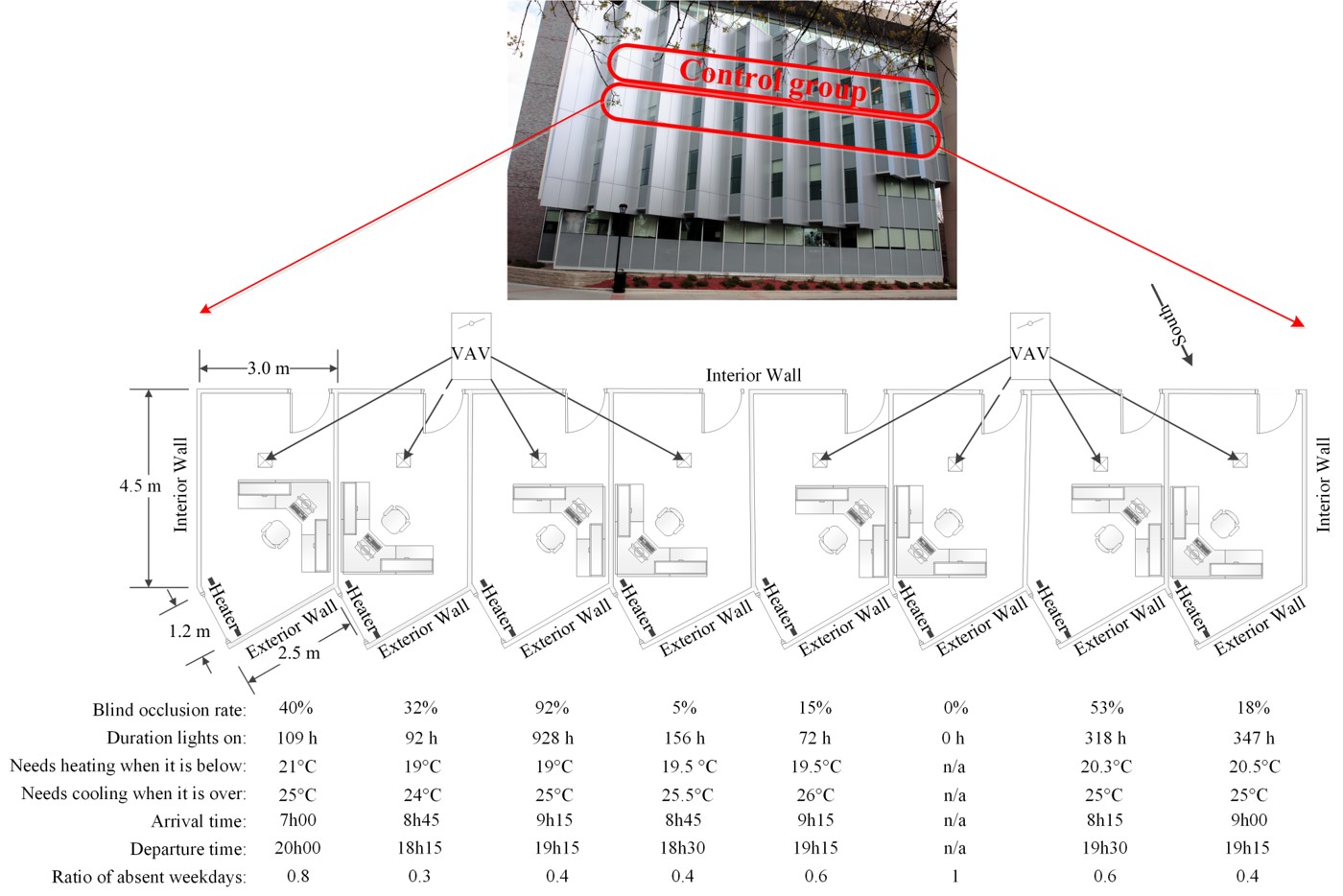
Floor plan of offices that controls were deployed in
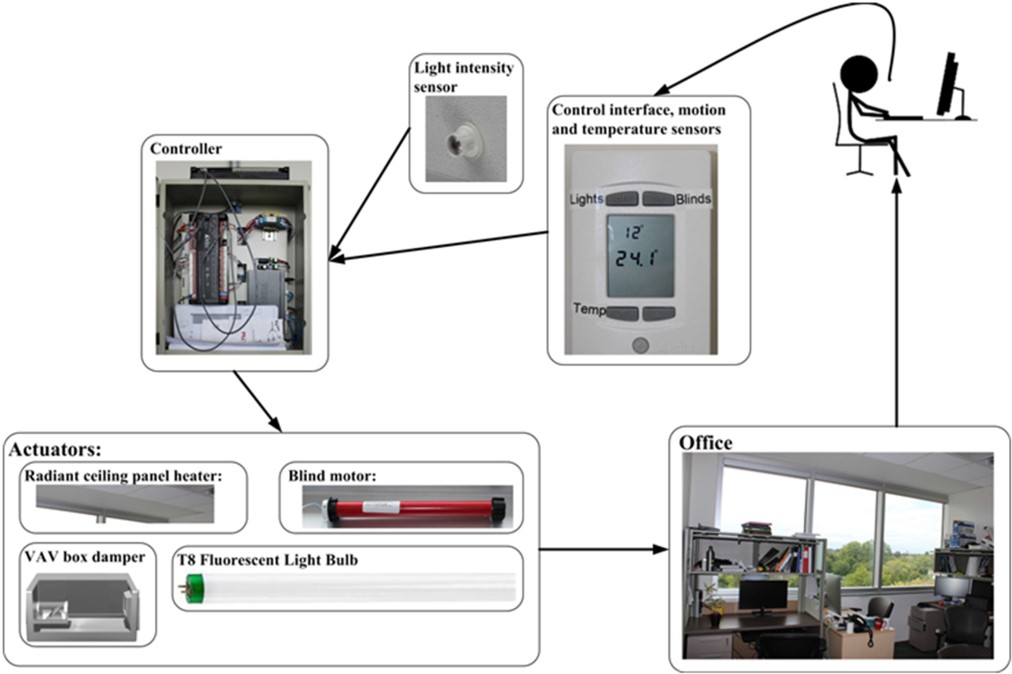
Sample equipment available in Delta Controls Lab
